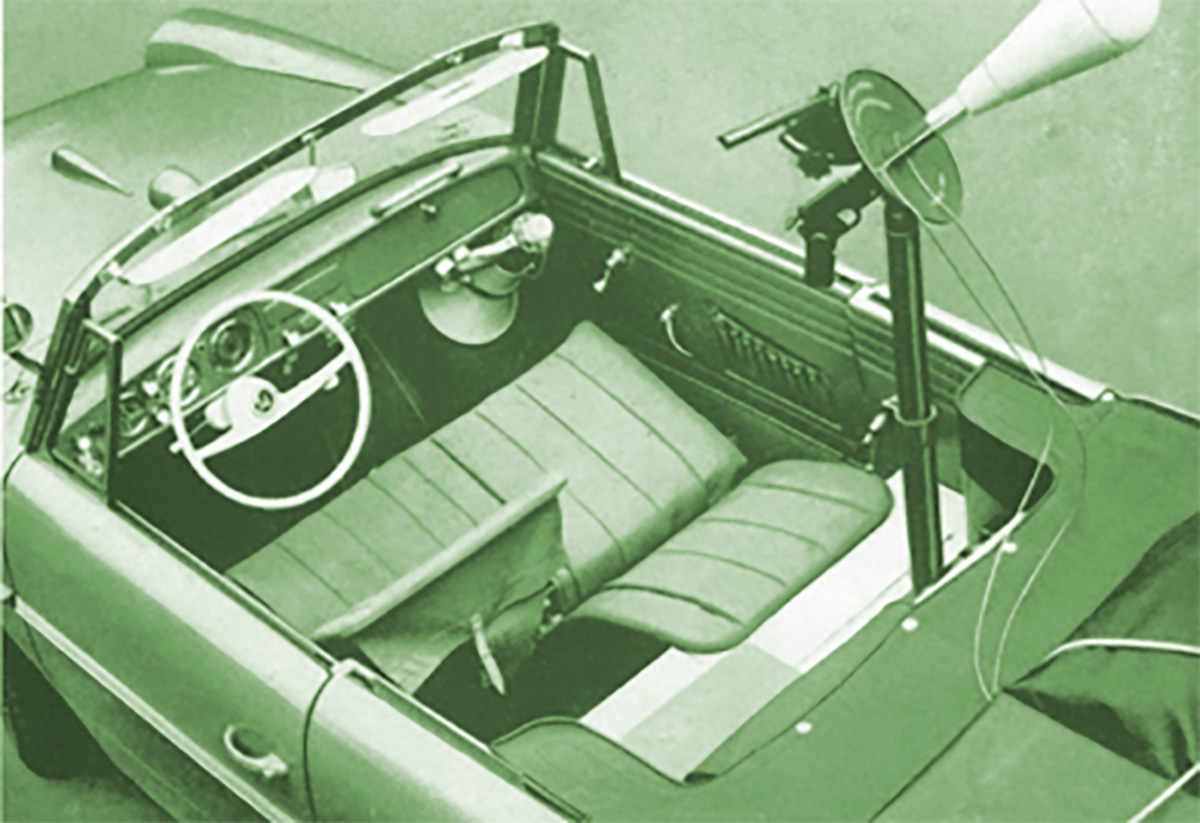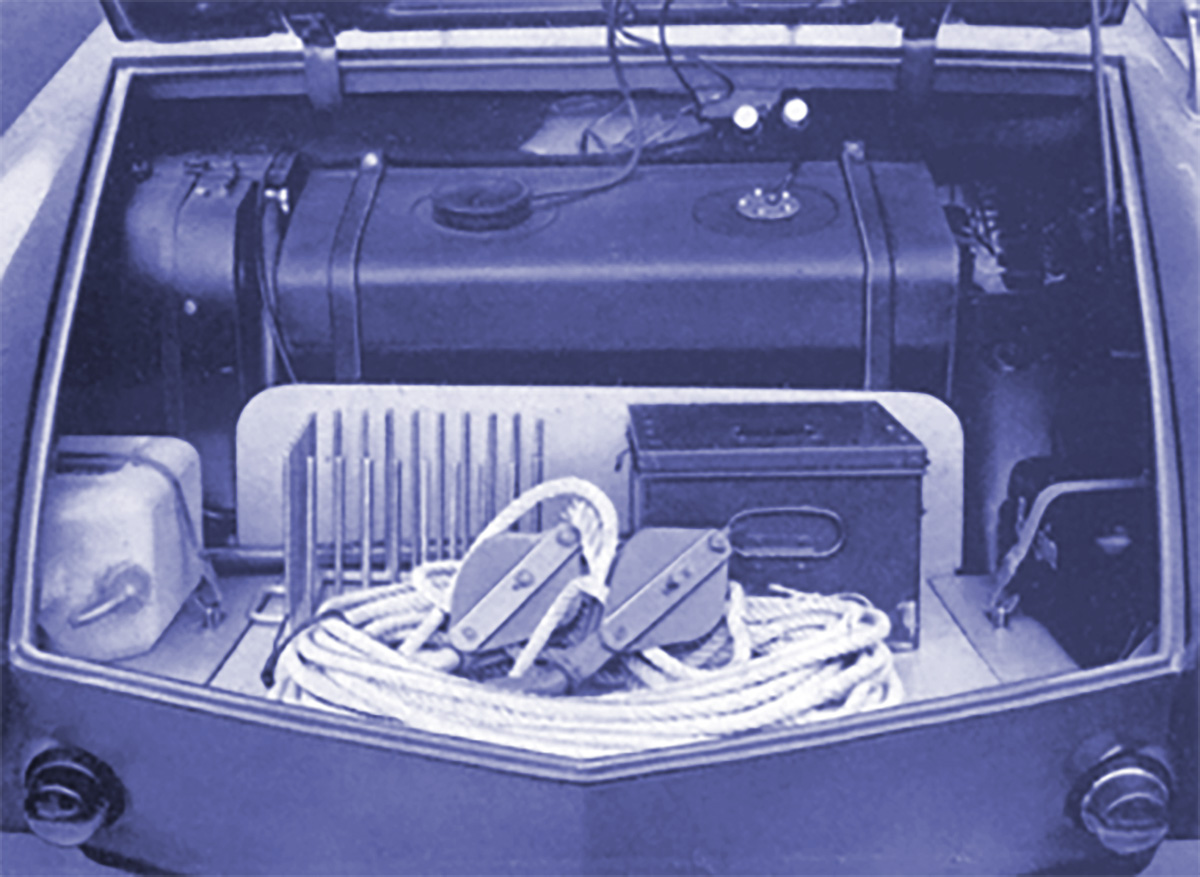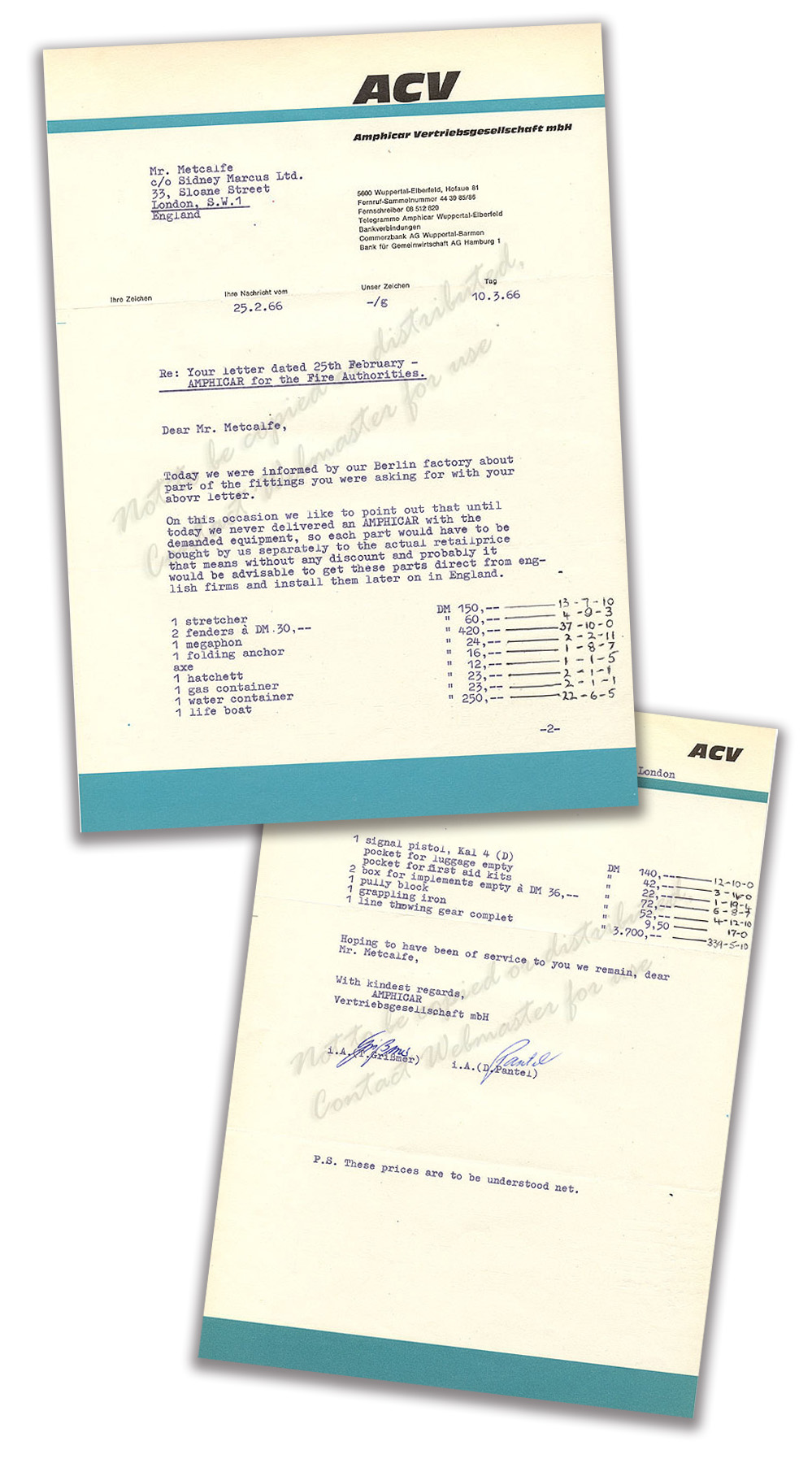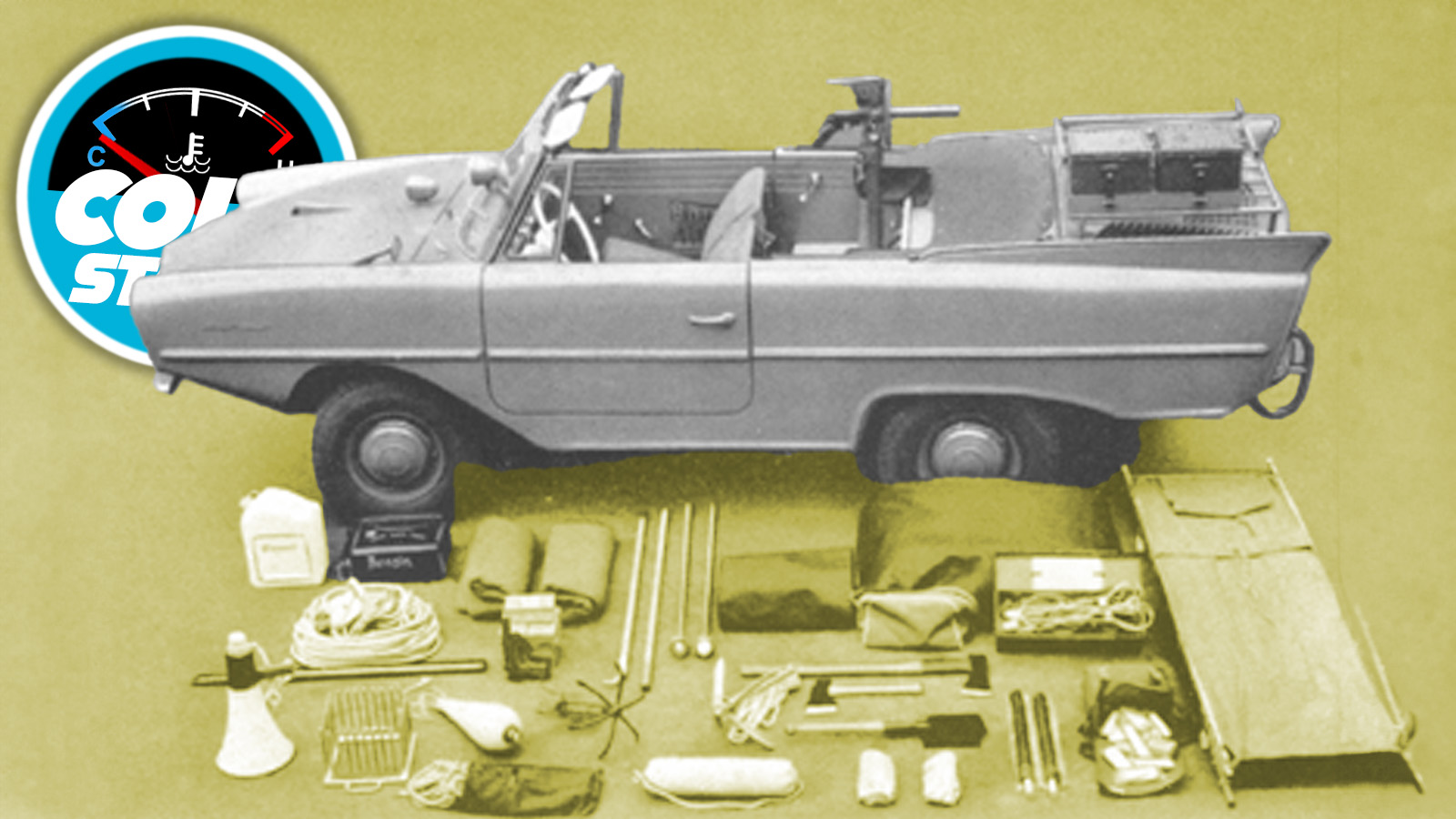You know what I believe in? A lot of things, really, but some standout pillars of the temple of my beliefs are the inherent dignity of corndogs, despite their shape and stick-based method of delivery, the fundamental goodness of humankind, and the absolute joy and rationality of an amphibious car. I’ve gone on and on about this before; I genuinely believe that amphibious cars should be widely enjoyed, and as common as, say, more terrestrial off-roaders are today.
I realize they’re not, and I see that as a tragedy of colossal proportions, an example of humanity foolishly denying themselves happiness.
It’s not like there haven’t been at least some attempts, the most famous of which has to be the Amphicar, a West German swimming-car with a rear-mounted Triumph engine that is probably the closest that an Amphibious car has ever come to widespread civilian success.
It wasn’t really a success, but it’s still a charming and fascinating machine, and you can drive it right into the water.
I once got to have an on-water-and-land drag race with one as I piloted another, weirder amphibious car:
I lost on water, but won on land, in case you’re curious.
Anyway, I’m a big fan of the Amphicar, so when I happened to see some scans of an old Amphicar brochure showing how an Amphicar could be outfitted to act as a sort of aquatic rescue vehicle, I was extremely excited. An aquatic rescue vehicle based on one of these makes so much sense, but I never realized the factory had an official solution and option packages for just this sort of thing!

The top image of this Cold Start shows the full set of equipment a rescue Amphicar could have, and above you see that it all manages to be mounted on and in the Amphicar in quite a tidy, unobtrusive way.
According to the International Amphicar Owners’ Club, here’s what a fully equipped rescue Amphicar included:
Water and gas containers, life-boat, grappling iron, rotating beacons, pockets for luggage and first aid kits, box for implements, stretcher, pulley block, throwing anchor, folding anchor, axe, hatchet, spade, megaphone, signal pistol, fork frame, dischargeable light buoy, leashes, fenders and torches.
That’s a lot! And I have no idea what a “fork frame” does!

Look how cleverly the foldable stretcher deploys, using the whole rear deck of the car to accommodate the unfortunate patient. It’s amazing to think about a stretcher even being possible in a car not much bigger than an MGB.

Inside you can see that with all the equipment, there’s still room to seat two, even with that line-throwing equipment with its launch-able buoy set up behind the seats. That’s a big megaphone under the dash.

The former rear seat contained a lot of equipment, including some storage lockers and the line-throwing hardware. Other equipment, like the stretcher and an inflatable lifeboat are mounted on the rear luggage rack.

Up in the front trunk, even more equipment lurks, including spare fuel, ropes and block-and-tackles, some box full of first-aid equipment, and what I think is the fork frame thing. I tried looking it up but just got a lot of pictures of forklift parts and bike frames.
if you had to patrol something like a lake, with people potentially needing assistance both on and off shore, an Amphicar like this seems just ideal. An Englishman named Ian Metcalfe in 1966 seemed to think so, as he ordered one well-outfitted from the factory for the Fire Authorities, according to these documents obtained by the International Amphicar Owner’s Club:

All that equipment adds up to DM 5,015.50; in today’s money, converting from 1966 Deutschmarks to modern US dollars, that comes to a non-trivial $12,500 or so, and that’s on top of the price of an Amphicar in 1966, which was $3,395, or about $33,000 today. I guess if you think about it, $45,500 for an amphibious rescue vehicle is actually kind of a deal?
I just think this is one of the coolest vehicles of any type I’ve seen. And it comes with a fork frame!









Torch is starting a rap career, his stage name is Lil’ Fork Frame.
So, to be absolutely clear, this is an Amphicar intended to be used as a rescue vehicle, not an Amphicar that needed rescuing? Blows the mind.
I think the level of optimism here is pretty high.
If you have two people who need rescuing and send someone in the Amphicar to save them, all you’ve done is make three people who need rescuing.
The fork frame is for grilling bratwurst. It looks like you could do 20 a time on that thing. Those Germans love their brats!
I’m a Wisconsin resident and I approve this message.
In graduate school I had a limnology professor who used an Amphicar as a research vessel. He and his students would drive from the University to the lakes, collect samples and then drive back to the University. It was cool.
I’m not sure if they still do, but there used to be a big car show for these here in Ohio every year. Like multiples of them driving into a lake at once, was a fun sight to see.
Where at in Ohio? This sounds like something I need to see live with my own eyes.
While this is extremely cool, I struggle to imagine a worse rescue vehicle lol. A lot of emergencies in the water happen when the weather is bad, and this thing can handle, what, 1 foot waves at most? The other fairly common thing with rescues is that speed and time matter, and this thing tops out at sub-10mph in the water.
So while I’m glad this exists as a historical novelty, I cannot imagine a world where a small pickup and a zodiac aren’t both a cheaper and substantially more effective solution lol.
It’s probably still cheaper than a modern pickup and zodiac, but I’m sure a modernized newly built Amphicar would cost a hell of a lot more than the original’s price adjusted for inflation. Then you have to think about how practical a rescue craft that can’t take more than two people at a time really is.
The only real use case I can think of would be island hopping on a big lake to rescue campers. You don’t need to dock and disembark on the other side and lug the patient and your gear; just drive right up the boat ramp and now you have a
golf cartSxS.